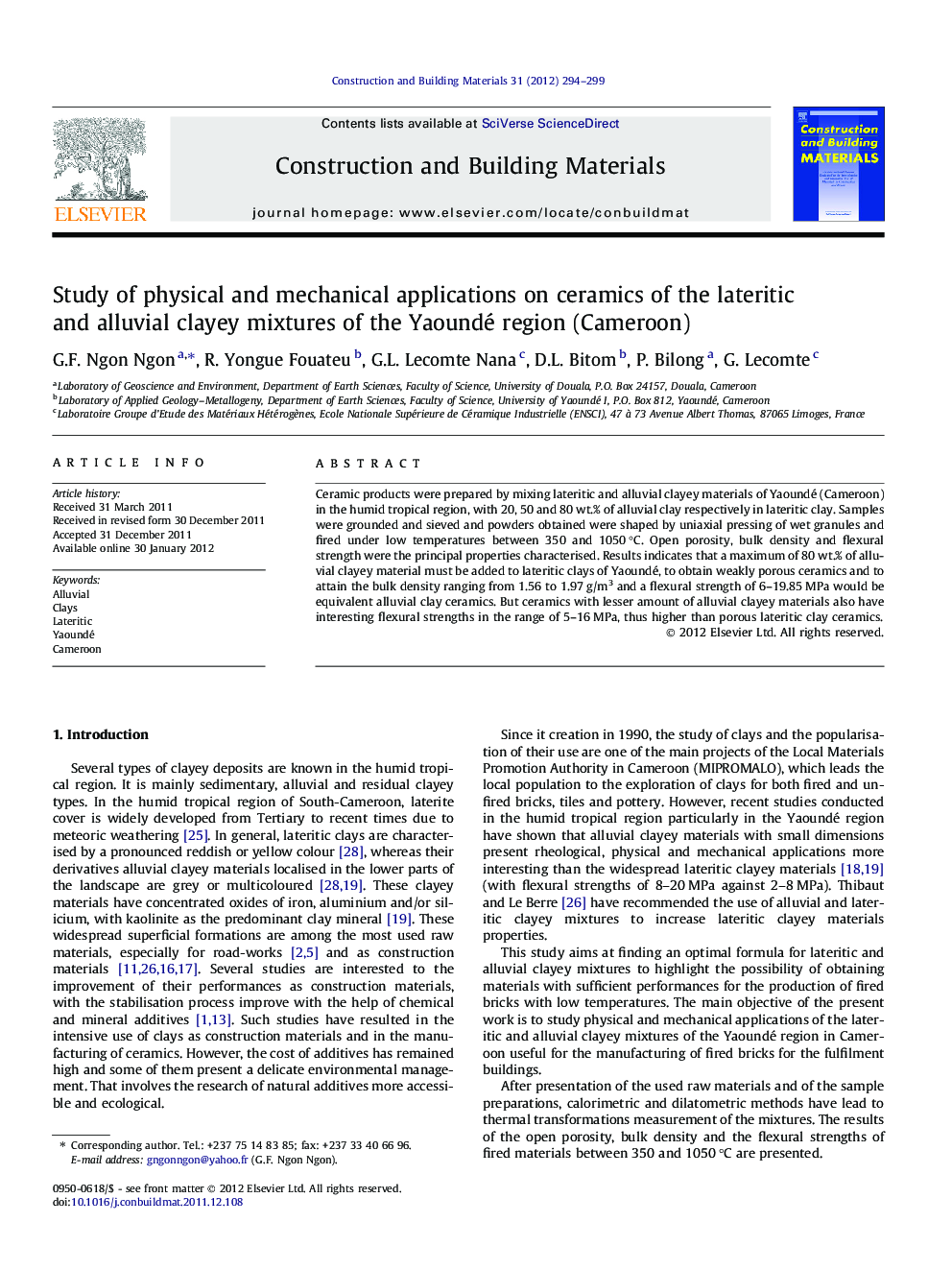| Article ID | Journal | Published Year | Pages | File Type |
|---|---|---|---|---|
| 258949 | Construction and Building Materials | 2012 | 6 Pages |
Ceramic products were prepared by mixing lateritic and alluvial clayey materials of Yaoundé (Cameroon) in the humid tropical region, with 20, 50 and 80 wt.% of alluvial clay respectively in lateritic clay. Samples were grounded and sieved and powders obtained were shaped by uniaxial pressing of wet granules and fired under low temperatures between 350 and 1050 °C. Open porosity, bulk density and flexural strength were the principal properties characterised. Results indicates that a maximum of 80 wt.% of alluvial clayey material must be added to lateritic clays of Yaoundé, to obtain weakly porous ceramics and to attain the bulk density ranging from 1.56 to 1.97 g/m3 and a flexural strength of 6–19.85 MPa would be equivalent alluvial clay ceramics. But ceramics with lesser amount of alluvial clayey materials also have interesting flexural strengths in the range of 5–16 MPa, thus higher than porous lateritic clay ceramics.
► Thermal transformations of lateritic and alluvial clayey mixtures are comparable to clay transformations. ► For a given amount of added alluvial clay in lateritic clay, open porosity and bulk density vary with the firing temperature. ► The open porosity decreases inversely with the increase of bulk density. ► The mixture with high amount of alluvial clay gives products with optimised mechanical strengths.
